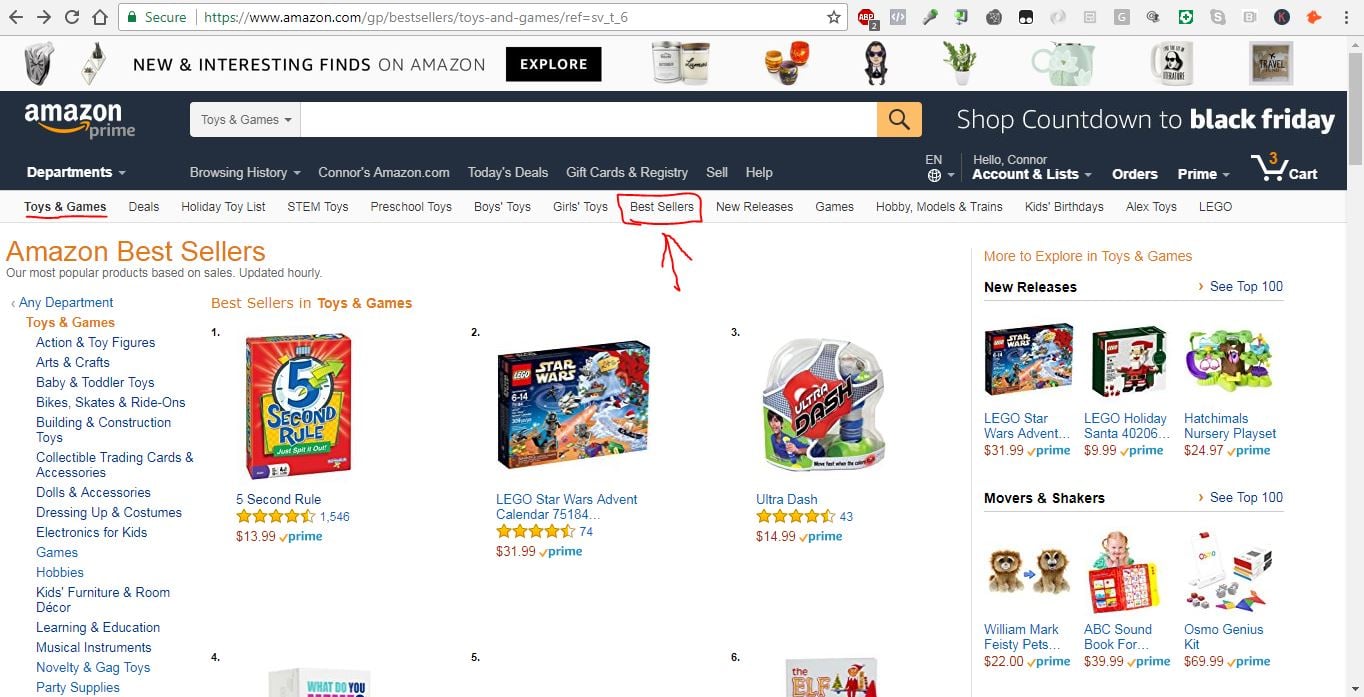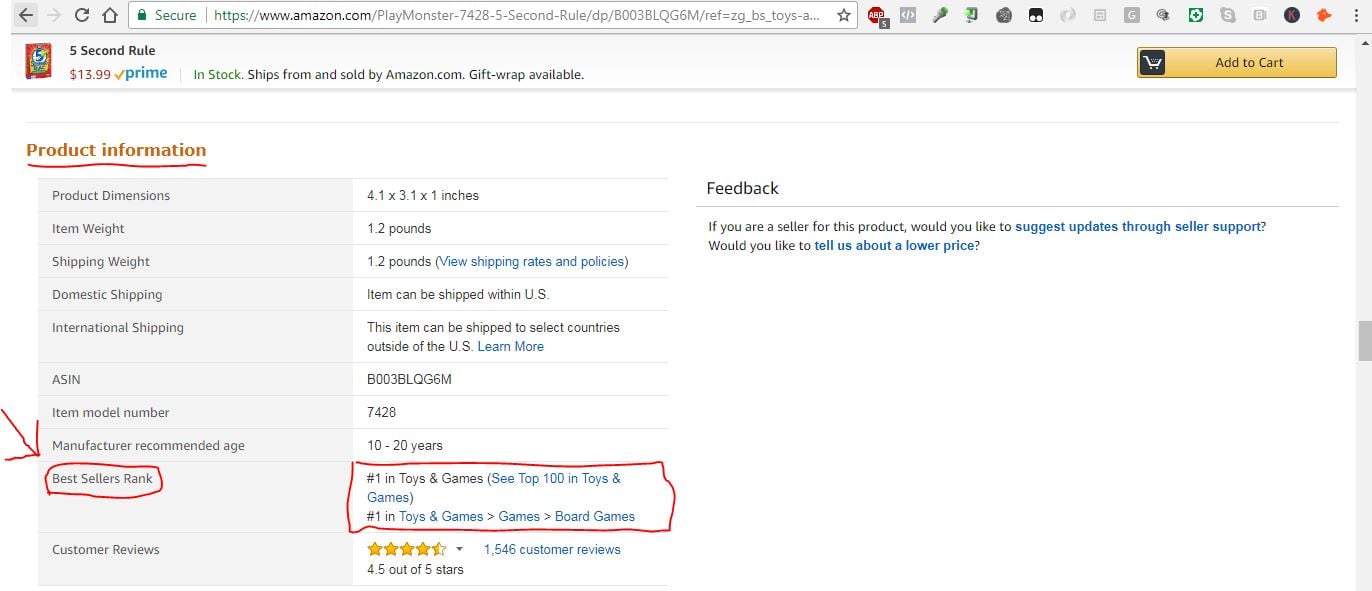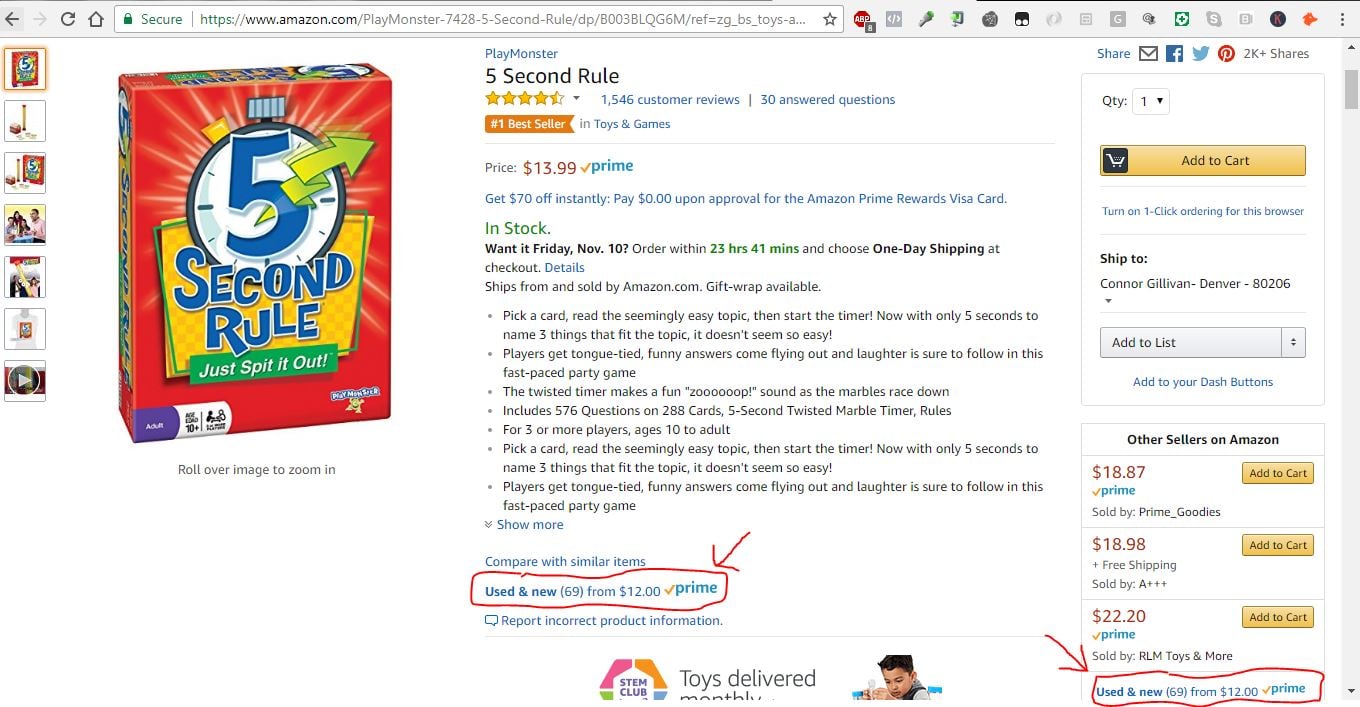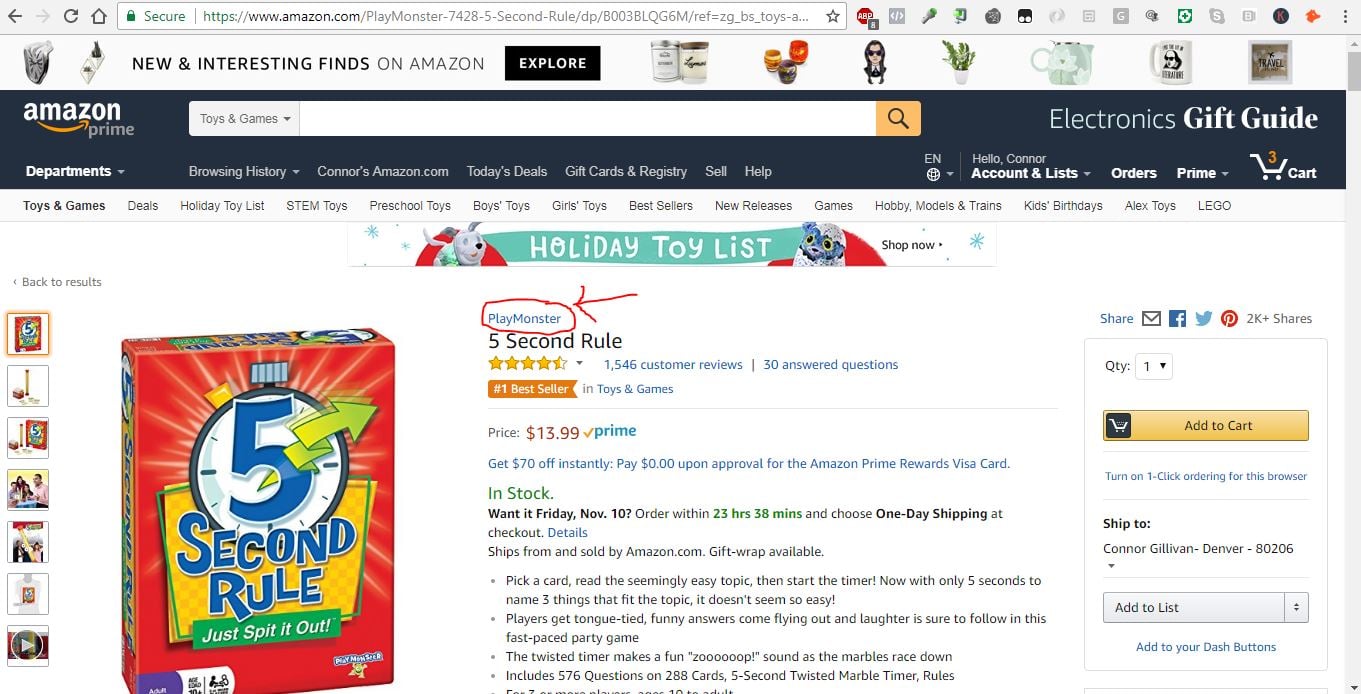There are many strategies for choosing products to sell on the Amazon Marketplace. In this article, I’ll explore a 5-step strategy that uses information provided by Amazon on all products in its catalog, accessible by anyone.
Step 1: Browse a Category’s Best Sellers List
Identify highly trending products with relatively little competition. These are products that are selling in high volumes, but haven’t been discovered by the top sellers.
Amazon discloses its top-selling products for each category via the “Best Sellers” lists and the Amazon Best Sellers Rank for each ASIN — Amazon Standard Identification Number.
Navigate to any category (such as Toys & Games or Furniture) or a subcategory (such as Toys & Games > Arts & Crafts or Furniture > Rugs) to find a Best Sellers list of the 100 top-selling products in that given category.

The Best Sellers tab in each category lists the top 100 products.
The Best Sellers lists are updated hourly based on the Amazon Best Sellers rank for each ASIN. To locate the Best Sellers Rank for each product, scroll down to its Product Information section.

Best Sellers Rank for each product appears in its Product Information section.
Amazon presents the Best Sellers Rank for the parent category (Toys & Games in the example above) and also for the subcategory (such as Toys & Games > Games > Board Games.)
Step 2: Research Each Best Selling Product
Starting from number 1 on the Best Sellers list of your category choice, open each product in a new browser tab and click on its “Used and new” link to view all sellers.

Click on a product’s “Used and new” link to view all sellers.
Look for the following details, which, when found together, indicate a strong opportunity for selling on Amazon.
- Amazon itself is not selling on the listing.
- A low number of sellers. Under 5 is best. Under 10 is good.
- A low number of Fulfillment by Amazon sellers. Zero is best. Under 5 is good.
- A smaller manufacturer. Stay away from the largest manufacturers, unless you have a connection to buying from them. For example, in the Toys & Games category, Hasbro, Mattel, and Fisher Price would likely be harder to sell.
To stay organized with your product research, record in a spreadsheet the ASIN for products that possess at least three of the four thresholds above. You can then create a short list of ASINs that may be strong sellers.
Step 3: Research the Supplier
Once you’ve identified potential products, identify the manufacturer or supplier. To do this, search the brand (from the Amazon listing) on Google.

Search a brand name (from the Amazon listing) on Google to locate its manufacturer or supplier.
If a Google search on the brand name doesn’t reveal the manufacturer or supplier, search the product name. If it’s sold on other sites, look for the manufacturer or brand.
Once you’ve identified the supplier, navigate to its website to find contact information for, if possible, the supplier’s wholesale department. This is usually in the header or footer section of a manufacturer’s website.
Step 4: Contact the Supplier
Next, reach out to the supplier via email with a simple message, such as:
Hello [supplier name or supplier wholesale rep]. My name is [your name] and I’m interested in selling your products through my ecommerce store. Can you please direct me to the best person to speak with?
Your goal with this initial email is to show the supplier that you are a potential buyer of its products.
If possible, speak on the phone with someone from the supplier’s wholesale department to further discuss the relationship. Discuss your interest in detail. Address if you are drop shipping or wholesaling, where you are planning to sell, and the price and payment terms.
Finalize your access to sell the products with a distribution agreement. This will grant you the rights to market and advertise the products from that supplier on Amazon.
Step 5: Start Selling the Product on Amazon
The final step is to sell the potentially profitable product on Amazon store to know if you’ve found a winner.
Test the product for 60 days. Closely watching its ASIN, adjusting prices to compete with other sellers, and optimize the listing for Amazon search.
If you need assistance with any of this, use a freelancer marketplace — such as Upwork, FreeeUp, PeoplePerHour — to hire an Amazon specialist to manage the listing for you.
After the 60 days, assess the performance of the product and determine if it’s worthwhile to keep in your inventory. If it is, continue to stock and optimize for more sales. If not, remove it and focus on another product.
In my experience, if you practice this strategy throughout the year, you’ll have a strong chance of finding a hit in each retail season as new products and manufacturers appear in the Best Sellers lists.
